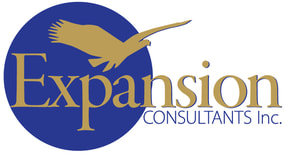
Thiagarajan P, Ciuffreda KJ, Capo-Aponte JE, Ludlam DP, Kapoor N
Review by
Jeremy Hauptman (Class of 2017)
Midwestern University, Arizona College of Optometry
Individuals who suffer from traumatic brain injury (TBI) can endure life-changing consequences that make activities of daily living more difficult or even impossible to complete. TBIs are due to a diffuse axonal injury that causes axons to stretch, twist, and tear resulting in damage of white matter. The damage causes reduction in strength, number, and organization of neuronal synapse, resulting in decreased synchrony and firing rate of axons. Patients suffered from this damage through slower responses and have to exert more effect for simple tasks compromising complex tasks such as reading. Reading is a complex task that requires precise coordination between aspects of the oculomotor system including accommodation, versions (saccades) and vergences. In addition to the precise coordination required, one must concurrently have the ability to accurately comprehend the reading material. Earlier research suggests that the majority of individuals with TBI have deficient oculomotor abilities.
This study evaluates the effect of oculomotor-based vision rehabilitation in individuals with TBIs. The goal is to answer the following questions: (1) Can oculomotor training (OMT) improve reading rate in this population? (2) What oculomotor parameters correlated with the improved reading rate and related factors?
Twelve subjects were recruited from the Raymond J. Greenswald Vision Rehabilitation Center at the State University of New York, State College of Optometry, Optometric Center of New York, New York City. These patients were between the ages of 23 to 33, suffered from TBI greater than 1 year prior, exhibited at least one symptom (skipping lines while reading, blur), had one clinical sign (receded near point of convergence) of non-strabismic oculomotor dysfunction, and had stable systemic health. Exclusion criteria included persons greater than 40 years old, best correct visual acuity, poorer than 20/30 in either eye, constant strabismus, and amblyopia or ocular diseases in either eye. Subjects underwent laboratory (Arrington eye movement recording system, versional parameters, saccadic latency, saccadic ratio, etc) and clinical (near point of convergence, near point of accommodation (push up), reading eye movements (Visagraph) parameters, near vision-related symptoms survey using the Convergence Insufficiency Symptom Survey scale and subjective visual attention using the Visual Search and Attention Test before and after OMT and sham training. The twelve subjects completed the study in 15 weeks. Subjects underwent both OMT and ST each for 6 weeks, 2 sessions a week. All three oculomotor subsystems (version/vergence/accommodation) were randomly ordered across sessions. Completing the 15 weeks, there was 3 one-week measurement periods: one week before phase 1 treatment, one week following phase 1 treatment, and one week following phase 2 treatment.
Each treatment lasted 45 minutes (15 minutes/oculomotor subsystem) with 15 minutes of rest for a total of 9 hours of training over 6 weeks. Versions were trained with the computerized oculomotor rehabilitation software; horizontal vergence training incorporated both amplitude and facility training for both response and speed. Step vergence amplitude training was completed with base-in/base-out prism. Accommodative training incorporated accommodative amplitude training for 10 minutes and binocular step accommodative facility for 5 minutes. Sham training was void of any disparity simulation or blur simulation, the primary drivers of the respective systems.
Following the oculomotor training, over 80% of the abnormal parameters significantly improved. Saccadic eye movements, amplitudes of vergence and accommodation and reading rate all improved. There was a 25% increase in reading rate. Reading rate, fixations/100 words, and grade level efficiency improved significantly. Changes in reading rate with oculomotor training was correlated to 2 key clinical parameters: the increase of binocular accommodative amplitudes to normal level and the increase ability of near point of convergence even though it fell short of normal level. Also, following oculomotor training, there was 2 significant changes in the non-oculomotor components reducing patients near symptoms and increased visual attention. No parameters changed with sham treatment.
In conclusion, oculomotor-based vision rehabilitation reveals the ability of neuroplasticity to help rebuild or relearn reading skills individuals lost due to the TBI. This neuroplasticity can help improve oculomotor components, reading rate and the ease which one can comprehend the desired material.

 RSS Feed
RSS Feed

